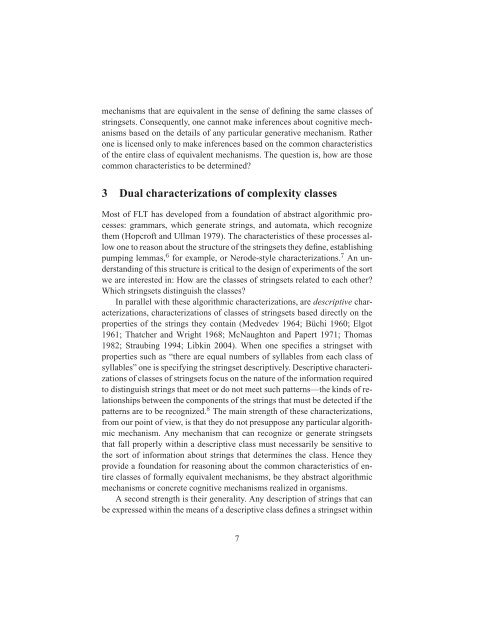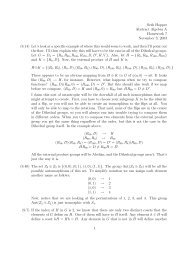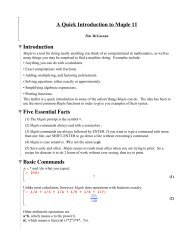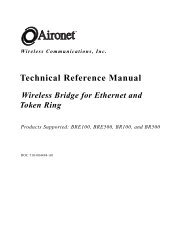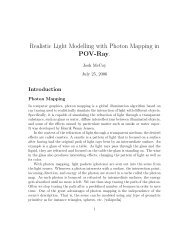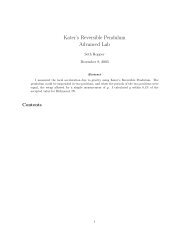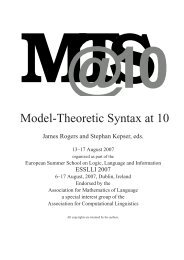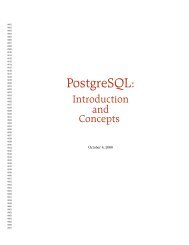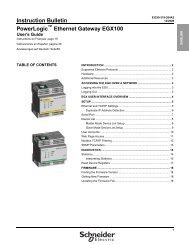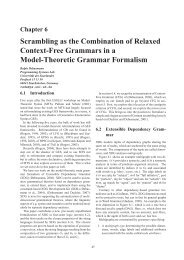The Use of Formal Language Theory in Studies of Artificial - CiteSeerX
The Use of Formal Language Theory in Studies of Artificial - CiteSeerX
The Use of Formal Language Theory in Studies of Artificial - CiteSeerX
You also want an ePaper? Increase the reach of your titles
YUMPU automatically turns print PDFs into web optimized ePapers that Google loves.
mechanisms that are equivalent <strong>in</strong> the sense <strong>of</strong> def<strong>in</strong><strong>in</strong>g the same classes <strong>of</strong>str<strong>in</strong>gsets. Consequently, one cannot make <strong>in</strong>ferences about cognitive mechanismsbased on the details <strong>of</strong> any particular generative mechanism. Ratherone is licensed only to make <strong>in</strong>ferences based on the common characteristics<strong>of</strong> the entire class <strong>of</strong> equivalent mechanisms. <strong>The</strong> question is, how are thosecommon characteristics to be determ<strong>in</strong>ed?3 Dual characterizations <strong>of</strong> complexity classesMost <strong>of</strong> FLT has developed from a foundation <strong>of</strong> abstract algorithmic processes:grammars, which generate str<strong>in</strong>gs, and automata, which recognizethem (Hopcr<strong>of</strong>t and Ullman 1979). <strong>The</strong> characteristics <strong>of</strong> these processes allowone to reason about the structure <strong>of</strong> the str<strong>in</strong>gsets they def<strong>in</strong>e, establish<strong>in</strong>gpump<strong>in</strong>g lemmas, 6 for example, or Nerode-style characterizations. 7 An understand<strong>in</strong>g<strong>of</strong> this structure is critical to the design <strong>of</strong> experiments <strong>of</strong> the sortwe are <strong>in</strong>terested <strong>in</strong>: How are the classes <strong>of</strong> str<strong>in</strong>gsets related to each other?Which str<strong>in</strong>gsets dist<strong>in</strong>guish the classes?In parallel with these algorithmic characterizations, are descriptive characterizations,characterizations <strong>of</strong> classes <strong>of</strong> str<strong>in</strong>gsets based directly on theproperties <strong>of</strong> the str<strong>in</strong>gs they conta<strong>in</strong> (Medvedev 1964; Büchi 1960; Elgot1961; Thatcher and Wright 1968; McNaughton and Papert 1971; Thomas1982; Straub<strong>in</strong>g 1994; Libk<strong>in</strong> 2004). When one specifies a str<strong>in</strong>gset withproperties such as “there are equal numbers <strong>of</strong> syllables from each class <strong>of</strong>syllables” one is specify<strong>in</strong>g the str<strong>in</strong>gset descriptively. Descriptive characterizations<strong>of</strong> classes <strong>of</strong> str<strong>in</strong>gsets focus on the nature <strong>of</strong> the <strong>in</strong>formation requiredto dist<strong>in</strong>guish str<strong>in</strong>gs that meet or do not meet such patterns—the k<strong>in</strong>ds <strong>of</strong> relationshipsbetween the components <strong>of</strong> the str<strong>in</strong>gs that must be detected if thepatterns are to be recognized. 8 <strong>The</strong> ma<strong>in</strong> strength <strong>of</strong> these characterizations,from our po<strong>in</strong>t <strong>of</strong> view, is that they do not presuppose any particular algorithmicmechanism. Any mechanism that can recognize or generate str<strong>in</strong>gsetsthat fall properly with<strong>in</strong> a descriptive class must necessarily be sensitive tothe sort <strong>of</strong> <strong>in</strong>formation about str<strong>in</strong>gs that determ<strong>in</strong>es the class. Hence theyprovide a foundation for reason<strong>in</strong>g about the common characteristics <strong>of</strong> entireclasses <strong>of</strong> formally equivalent mechanisms, be they abstract algorithmicmechanisms or concrete cognitive mechanisms realized <strong>in</strong> organisms.A second strength is their generality. Any description <strong>of</strong> str<strong>in</strong>gs that canbe expressed with<strong>in</strong> the means <strong>of</strong> a descriptive class def<strong>in</strong>es a str<strong>in</strong>gset with<strong>in</strong>7


